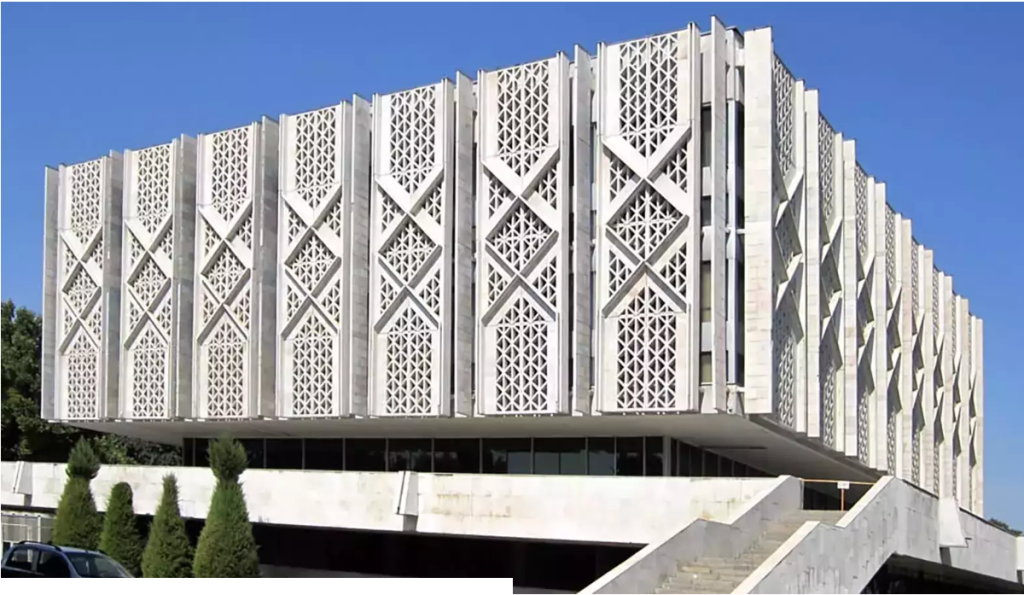Uzbekistan’s museums show effects of Soviet colonisation. Putin is speaking a familiar language
Touring Uzbekistan last week, I visited its State Museum of History. It had a graphic account of the fight against Russian colonialism, the attempt of the Soviet Union to wipe out Uzbek culture and history, and the country’s triumphant gaining of independence in 1991.
Uzbekistan now celebrates Independence Day as enthusiastically as India does. I was told that the situation was similar in other Central Asian countries that gained freedom from the Soviet Union.
Most Indians think of the Soviet Union as a single political entity. The Uzbek museum makes it clear that the longest-lasting imperialist in the 20th century was the Soviet Union, which colonised several nations in Central Asia and Eastern Europe. It ruled with an iron fist even as western powers like Britain decolonised.
Yet in common parlance the words ‘imperialism’ and ‘colonialism’ are used to describe western colonialism only. It comes as an enlightening jolt to see Uzbek museums speak of Russian colonialism. Indeed, Tashkent has a memorial and entire museum dedicated to ‘victims of repression’. There are similar museums in other cities.
For Putin, the break-up of the Soviet Union in 1991 was the biggest disaster in history. He remains an unreconstructed colonialist, dying to recreate the Red Empire.
The museums portray Uzbekistan through the ages as a wealthy Silk Route region, with some of the most advanced centres of learning in the world at Khiva, Bukhara and Samarkand. The emperor Timur, (Timur-Lang in Indian textbooks), is lionised as the greatest Uzbek. Statues of Timur cover all Uzbek cities. Babur, a descendant of Timur, founded the Mughal Empire in India, but is not highlighted in local history.
After Timur, the region was contested by many Khans (rulers). In 1717, Russia’s Peter the Great attempted to invade, but was bloodily repulsed. Russia continued with more attempts and succeeded in the late 19th century. The Khans became Russian puppets. Several local uprisings were crushed by the Tsars.
Then the communists came to power in Moscow, and killed or exiled the Khans. Central Asia was called part of the USSR. The Soviets portrayed Timur and other fabled Uzbeks as medieval exploiters to be shunned. They demolished or closed mosques and madrassas, aiming to erase traditional Uzbek culture and replace it with atheism and “socialist realism.” They crushed the Basmachi revolt, an Islamic movement, between 1917 and 1922, massacring and burning entire villages.
The 1930s brought Stalinist purges. Islam, which had been tolerated despite the Basmachi revolt, was deemed totally unacceptable. Imams were killed or exiled, Haj travel and Islamic prayer were banned. Mosques and madrassas were converted to warehouses and social clubs. Museum exhibits portray the mass killings, the ruined villages and gulags (large prisons used to jail dissenters, including writers, artists and intellectuals, and use them as slave labour).
Amu Darya and Syr Darya were two great rivers flowing from the Hindu Kush mountains into the Aral Sea, an enormous inland lake. The rivers were diverted by the Soviets to grow irrigated cotton with forced labour. This created a great environmental disaster.
The Aral Sea dried up, killing all marine life and ending the livelihoods of fishermen who used to catch and export over 40,000 tonnes of fish per year. Rusting fishing ships lie abandoned in the sands, a grisly tourist attraction. The museum complains that Uzbekistan was forced to become a commodity producer, with all its cotton sent for processing into textiles to Russia at a great profit. This sounds uncannily like Indian criticisms of British colonialism.
Doubtless there is some exaggeration in the museum’s denunciation of Soviet rule, which also yielded economic development. Still, it comes as a shock to see the USSR portrayed as the Russian empire, colonising Central Asia.
Apart from this internal empire, the Soviets also had an external empire. In World War 2, the USSR overran East European countries from Estonia to Czechoslovakia. These countries were called ‘People’s Republics’, but the only people who mattered were Soviet overlords. Attempts by the local communist parties to assert themselves — Hungary in 1956 and Czechoslovakia in 1968 — were crushed by Soviet tanks.
For Vladimir Putin, the break-up of the Soviet Union in 1991 was the biggest disaster in history. He remains an unreconstructed colonialist, dying to recreate the Red Empire. He views ethnic Russian enclaves abroad as his territory. He has used military might to establish autonomous Russian-majority enclaves in Georgia, Moldova and Ukraine.
And in 2021, he declared there was no such thing as a separate Ukrainian nation, that it was historically and culturally part of Russia, and so he was invading to integrate. Unexpectedly strong Ukrainian resistance was proof enough that it was a former colony determined to resist re-colonisation.
I am astounded that so many Indians regard this re-colonisation as entirely justified. Would they tolerate a British repossession of India? Or French repossession of Puducherry? No, there is a double standard here. Western colonialism is condemned while Russian colonialism is winked at.
This article was originally published by The Times of India on October 14, 2023.


